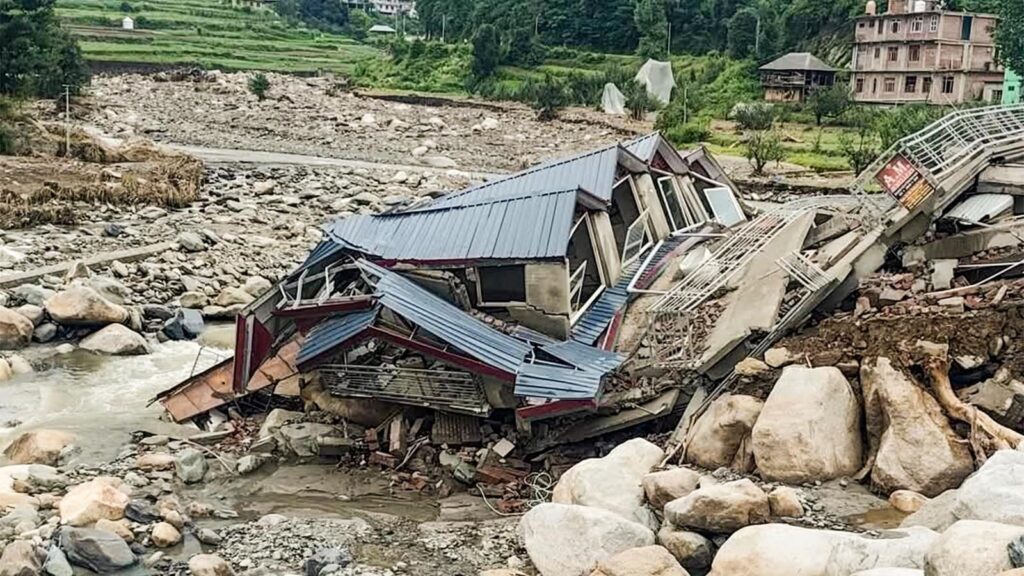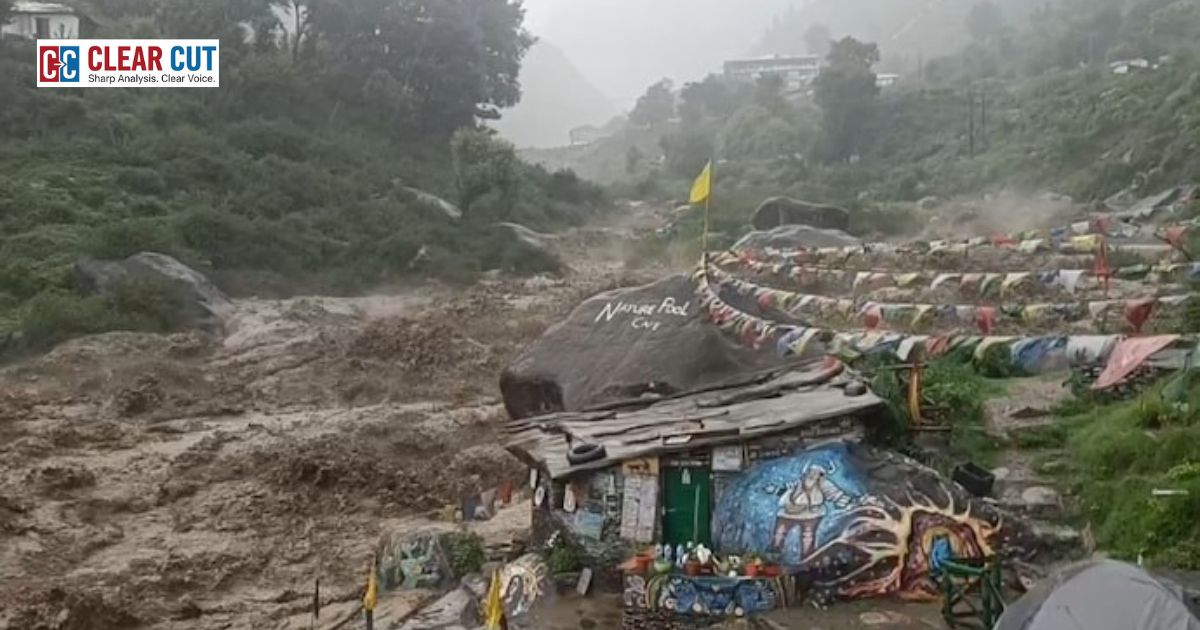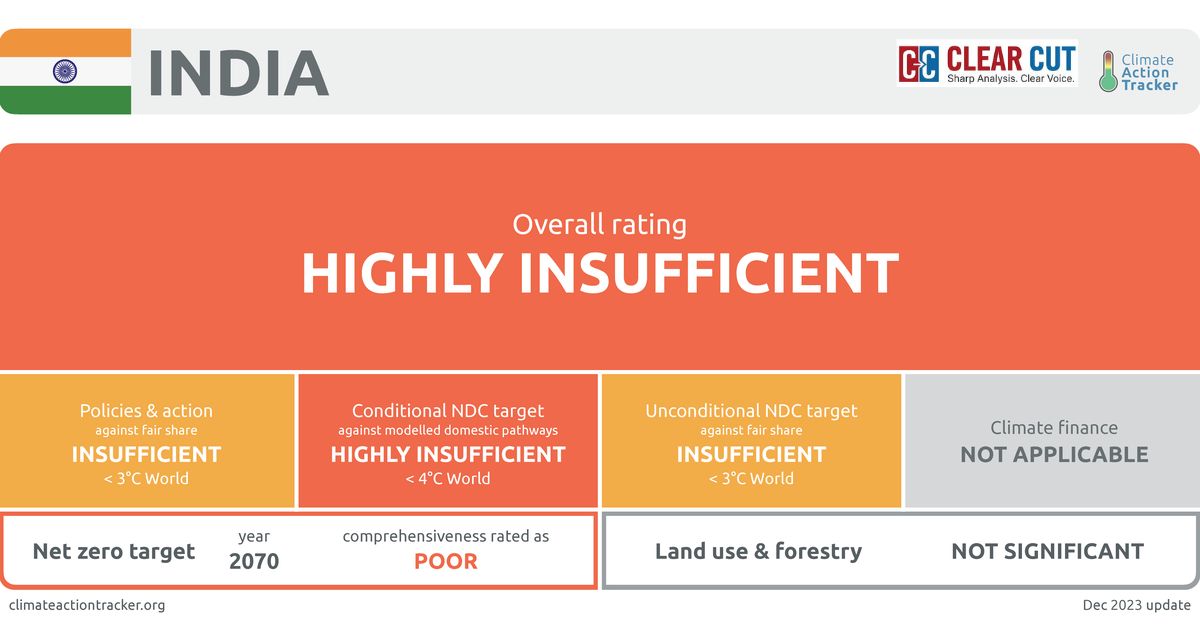Photo Credit : India Today
Clear Cut Climate Desk
New Delhi, UPDATED: Sep 10, 2025 05:15 IST
Written By: Antara Mrinal
A Himalayan Wake-Up Call
The monsoons have wreaked havoc on the state of Himachal Pradesh. Since 20 June, monsoon rains have led to 135 major landslides, 95 flash floods, and 45 cloudbursts. The human loss has been tragic. About 366 people have died, thousands have been displaced, and more than 6,000 homes and shops have been destroyed. According to official reports, the damage is estimated to be more than ₹4,080 crore, with roads, power infrastructure and water systems suffering the most. For now, helicopters have been dropping food rations into valleys that have been cut-off, while the Centre has hurriedly sent ₹1,500 crore in relief. But the devastation is so extensive and overwhelming that the emergency relief can hardly hope to cover it all. Two things are worth noting about this tragedy. It is not a one-off event, but an increasingly common climate shock, which India can no longer afford to treat as a one-off emergency.
Counting the Decade’s Losses
The devastation in Himachal is just the latest entry in a growing climate cost ledger. A decade ago, the 2013 Uttarakhand floods killed thousands and recovery costs were USD 250 million – much of that was backed by World Bank loans. Five years later, Kerala’s 2018 floods had a reconstruction bill of USD 3.4-3.7 billion, binding the state finances for years to come. In 2023, the widespread Himalayan flooding caused losses close to ₹10,000 crore, while our report of global insurance losses from Swiss Reinsurance Company Ltd. (Swiss Re) stated that India alone had disaster losses of USD 12 billion last year, way above its ten-year average of USD 8 billion.
These numbers aren’t just figures; they show a worrying trend. Disasters are coming more often and the price tag rises higher each time. The Haryana damage of more than ₹4,000 crore this year is only the latest reminder that India is broken in its fiscal approach to disasters.

Photo Credit : Hindustan Times
Why the Old Fiscal Model Fails
In India, disaster management has historically invoked the notion of finding money after the disaster has occurred. States use funds from the contingency fund, and the Centre releases funds from the State and National Disaster Response Funds with supplementary bank loans or international assistance. This is a disastrous approach that causes multiple, consequential, and cascading problems. Money is removed from other development projects, money is added to state-level debts, and recovery from the disaster is not efficient. And it is the poorest that pay the largest price in villages and small towns where compensation can take months, if not longer, and rebuilding is rarely at a sufficient scale. An accident, natural or otherwise, will typically benefit from relief packages for basic needs related to food and temporary shelter, but will rarely have the preventative investments made that prevent a repeat of the same disaster the following season.
The 2025 Himachal crisis shows us the serial failures of this approach. Relief of ₹1,500 crore is dwarfed to meet losses of an estimated ₹4,000 crore, and the gap is left for families, businesses, and underfunded state agencies to carry.
Towards a Climate-Resilient Fiscal Plan
India needs a fiscal framework that anticipates not only live disasters, but disasters prior to their occurrence. Economists and climate policy specialists now promote a climate-resilient fiscal framework, one in which we bundle risk reduction strategies, pre-arranged financial instruments, and resilient infrastructure, all into routine government budgeting.
A climate-resilient fiscal framework is built upon 3 overarching pillars:
Financial Protection – The first pillar is for protection through affirmative financial measures. This could involve creating a Central Disaster Resilience Fund, improving state-level reserves, and looking into more contemporary risk-transfer mechanisms (think catastrophe bonds or contingent credit lines). Pre-arranged finance is of vital important as it often offers rapid payments and helps limits new, disruptive emergency borrowing.
Prevention through Capital Investment – India needs to budget for resilience by avoiding the yearly phenomenon of reconstructing bridges and roads wiped out by flooding after storm events. Instead, investing upfront in urban drainage systems, flood resistant rural roads, resilient buildings, and restoring natural protective barriers such as wetlands or forests, can during a displacement event, provide significant reductions on loss.
Protection of Livelihoods and Communities – This can include enhanced crop and income insurance, expanded rural employment guarantees, or funding for rapid and simple post-disaster assessments, which collectively can position a community for faster recovery from displacement and/or poverty traps. For rural Himachal families who have lost orchards and land to landslides this year, such programs could mean the difference between rebuilding or migrating out.
The Role of Civil Society
In addition to government efforts, India’s dynamic NGO sector continues to demonstrate how resilience can be established from the ground up. Organizations like Sustainable Environment and Ecological Development Society (SEEDS) create community-based early warning systems and build local preparedness. All India Disaster Mitigation Institute (AIDMI) is involved in policy work while also testing practical risk-reduction strategies. Goonj, a Delhi-based NGO that recycles urban surplus into rural development material, while running large-scale relief and rehabilitation drives during disasters, has pioneered “Cloth for Work” projects where villagers rebuild local infrastructure in exchange for essentials, engaging them with dignity to rebuild their own communities. Oxfam India, a leading NGO that fights inequality and poverty, and provides humanitarian relief during floods, cyclones, and other disasters in India, is a key player in humanitarian response, particularly the water, sanitation and livelihoods after floods.
These organizations often move faster than official agencies and develop solutions that are tailored to local contexts. Yet they are uncoordinated and underfunded. A climate-resilient budgeting structure must plan to formally include NGOs and provide predictable funding to allow them to expand sustainable community-based models.
Lessons from Himachal – The Economics of Prevention
Skeptics often ask: Can India afford to invest more in resilience? The evidence suggests a preferable question is: Can India afford not to? A 2018 report indicated that Kerala faced a bill of nearly USD 4 billion after its floods. By 2023, the total cost of disasters was over USD 12 billion. In 2025, Himachal Pradesh has already lost over ₹4,000 crore, in a single monsoon season.
Now, can you imagine if India began investing about 0.2–0.5% of GDP in resilient infrastructure and financial protection each year? This would amount to billions at the front end, but represents an avoided reconstruction cost, and preserved livelihoods, and economic activity of many multiples of that amount. Prevention has been said, and is true, to be cheaper than cure.
The situation currently unfolding in Himachal Pradesh represents a sobering case that highlights these points. The highways that are important for apple growers remain blocked, stalling the transportation of their fruit and disabled them from accessing markets. Large sections of the state, including entire valleys, blacked out from the collapse of substations and transformers. Shortage of drinking water has led families to queue for tankers. Relief is being warehoused and provided, but very slowly and in piecemeal form.
The major takeaway is that India cannot continue budgeting for disasters to be occasional surprises. Disasters are preordained costs of a worsening climate; and thus must be treated as such in the fiscal policy.
Investing in Tomorrow’s Safety
The future of India pivots on a decision to be reactive or resilient. A climate-resilient fiscal budget, anchored in financial protection, preventative investment, and recovery led by communities, can shift India’s ability to respond to disasters from firefighting into foresight.
The devastation in Himachal Pradesh is a wake-up call being heard across the Himalayas and beyond. Policymakers now face a moment of decision: will they continue to fix the problems of the past, one monsoon at a time, or invest in a safer, more secure future?
With inputs from:
- State Disaster Management Authority (SDMA), Himachal Pradesh
- Revenue and Disaster Management Department (state government)
- National Disaster Management Authority (NDMA)
- State Disaster Response Fund (SDRF) & National Disaster Response Fund (NDRF)
- Press Information Bureau (PIB)
- Swiss Re




